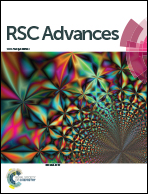Effect of vacancies on the structural and electronic properties of Ti2CO2
Abstract
Ti2CO2 MXene is widely considered as a potential candidate material for sensors and optical devices. In this paper, first-principles calculations are performed to investigate the structural and electronic properties of pristine and vacancy defect Ti2CO2 monolayer. The results indicate that C-vacancy is energetically more favorable than Ti-vacancy and O-vacancy because of the smaller formation energy of C vacancy. The introduction of vacancy defects results in the transition from semiconductor to metal, and improves the electronic conductivities of Ti2CO2 monolayer. The introduction of C and O vacancies causes the Ti-d state to split into several peaks in the energy range of 0 to 2 eV, while the introduction of Ti vacancy makes the Ti-d state weaker and the C-p state stronger. Furthermore, the work function can be effectively engineered by vacancy defects.



 Please wait while we load your content...
Please wait while we load your content...